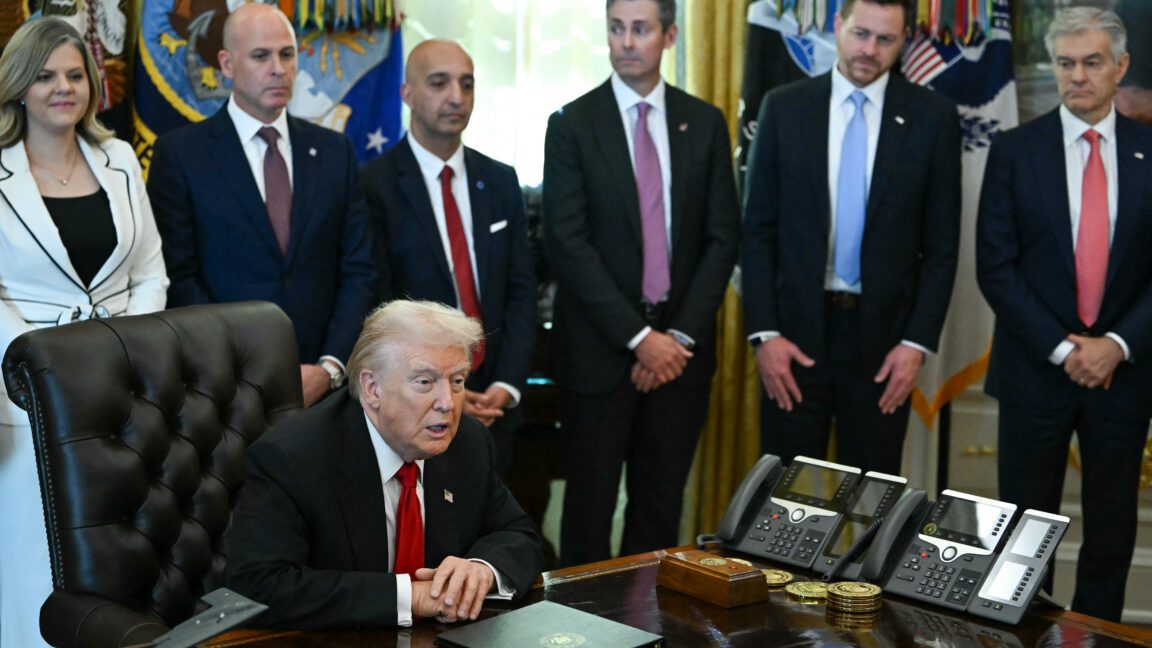President Trump recently announced a significant pricing deal for GLP-1 medications, aimed at making these essential drugs more accessible to certain Americans, particularly those on Medicare and Medicaid.
Overview of the Announcement
During a White House event on Thursday, President Trump revealed agreements with major pharmaceutical companies Novo Nordisk and Eli Lilly. The focus of these agreements is on GLP-1 receptor agonists, a class of medications widely used for the treatment of obesity and type 2 diabetes. The announcement has sparked a mix of optimism and skepticism regarding its implications for healthcare costs and patient access.
Details of the Pricing Deal
The newly negotiated pricing structure allows Medicare and state Medicaid programs to purchase a month’s supply of several popular GLP-1 drugs—specifically Ozempic, Wegovy, Mounjaro, and Zepbound—at a reduced price of $245 each for eligible patients. Additionally, those on Medicare will only have to pay a $50 co-pay for these medications.
This pricing represents a substantial reduction from the list prices of these drugs. For context, the list price for Ozempic is approximately $997, for Wegovy it is around $1,350, Mounjaro is priced at $1,080, and Zepbound is listed at $1,086. However, it is important to note that the actual prices paid by purchasers often differ from these list prices due to various discounts, rebates, and insurance negotiations.
Understanding GLP-1 Medications
GLP-1 receptor agonists are increasingly recognized for their effectiveness in managing weight and controlling blood sugar levels in patients with type 2 diabetes. These medications work by mimicking the action of the glucagon-like peptide-1 hormone, which helps regulate appetite and insulin secretion. As obesity rates continue to rise in the United States, the demand for effective treatments like GLP-1 drugs has surged.
Ozempic and Wegovy, both manufactured by Novo Nordisk, are particularly well-known in the market. Ozempic is primarily prescribed for diabetes management, while Wegovy is specifically approved for weight management. Eli Lilly’s Mounjaro and Zepbound also offer similar benefits, contributing to the growing landscape of GLP-1 therapies.
The Impact on Patients
The announcement has the potential to significantly impact patients who rely on these medications. For many individuals, the high cost of GLP-1 drugs has been a barrier to access. The new pricing structure aims to alleviate some of this financial burden, particularly for those enrolled in Medicare and Medicaid, who often face stricter budget constraints.
However, the question remains: how many patients will actually benefit from this deal? While the reduced prices are promising, the eligibility criteria for these programs may limit access for some individuals. Furthermore, the long-term sustainability of these pricing agreements is uncertain, raising concerns about whether they will remain in place as market dynamics evolve.
Market Reactions and Stakeholder Perspectives
The announcement has elicited a range of reactions from various stakeholders in the healthcare sector. Pharmaceutical companies, patient advocacy groups, and policymakers are all weighing in on the implications of this pricing deal.
Pharmaceutical Companies
Pharmaceutical companies like Novo Nordisk and Eli Lilly have expressed support for the initiative, highlighting their commitment to making medications more affordable. However, some industry analysts caution that while the reduced prices may seem beneficial, they could also lead to increased scrutiny of drug pricing practices in general. This could prompt further negotiations and potentially impact the profitability of these companies in the long run.
Patient Advocacy Groups
Patient advocacy organizations have largely welcomed the announcement, viewing it as a positive step towards improving access to essential medications. Many advocates argue that the high cost of GLP-1 drugs has disproportionately affected low-income individuals and those without adequate insurance coverage. By making these medications more affordable, the new pricing structure could help reduce health disparities among different population groups.
Policymakers and Economists
Policymakers are also closely monitoring the situation. Some lawmakers have praised the initiative as a necessary intervention in the ongoing battle against high drug prices in the United States. However, others remain skeptical, questioning the long-term viability of such deals and whether they will lead to meaningful changes in the overall healthcare landscape.
Uncertainties and Questions Ahead
Despite the positive reception of the pricing deal, several uncertainties linger. One of the most pressing questions is how much Medicare and Medicaid would have paid for these drugs without this agreement. The lack of transparency regarding previous pricing structures complicates the evaluation of the deal’s true impact.
Additionally, there are concerns about the sustainability of these negotiated prices. Will pharmaceutical companies be able to maintain these lower prices in the face of rising production costs and market pressures? If the prices revert to their original levels, patients may find themselves back at square one, facing the same financial barriers that prompted the announcement in the first place.
Future Implications for Drug Pricing
The announcement could set a precedent for future negotiations between the government and pharmaceutical companies. If successful, it may encourage further efforts to lower drug prices across various therapeutic areas. However, this could also lead to pushback from the pharmaceutical industry, which may argue that price controls could stifle innovation and limit the development of new treatments.
Moreover, the deal raises broader questions about the role of government in healthcare pricing. As the U.S. grapples with the complexities of healthcare reform, the balance between ensuring patient access to medications and fostering a competitive market remains a contentious issue.
Conclusion
President Trump’s announcement regarding the pricing of GLP-1 medications marks a notable development in the ongoing discourse surrounding drug affordability in the United States. While the reduced prices for eligible patients on Medicare and Medicaid are a positive step, the long-term implications of this deal remain uncertain. As stakeholders continue to analyze its impact, the healthcare community will be watching closely to see how this initiative shapes the future of drug pricing and access in America.
Source: Original report
Was this helpful?
Last Modified: November 8, 2025 at 1:39 am
2 views















